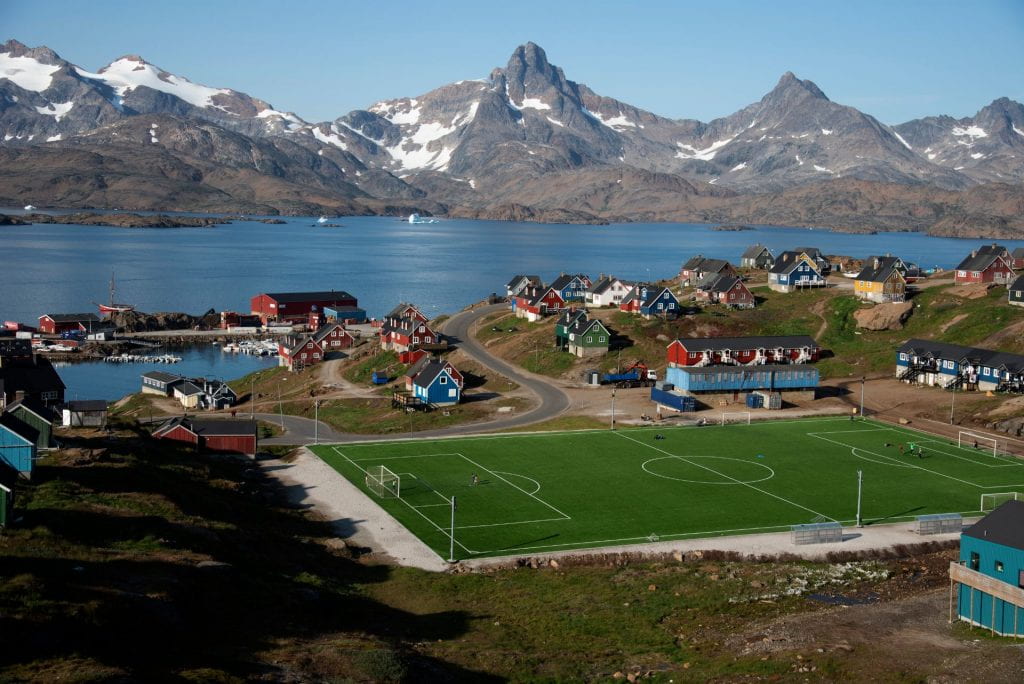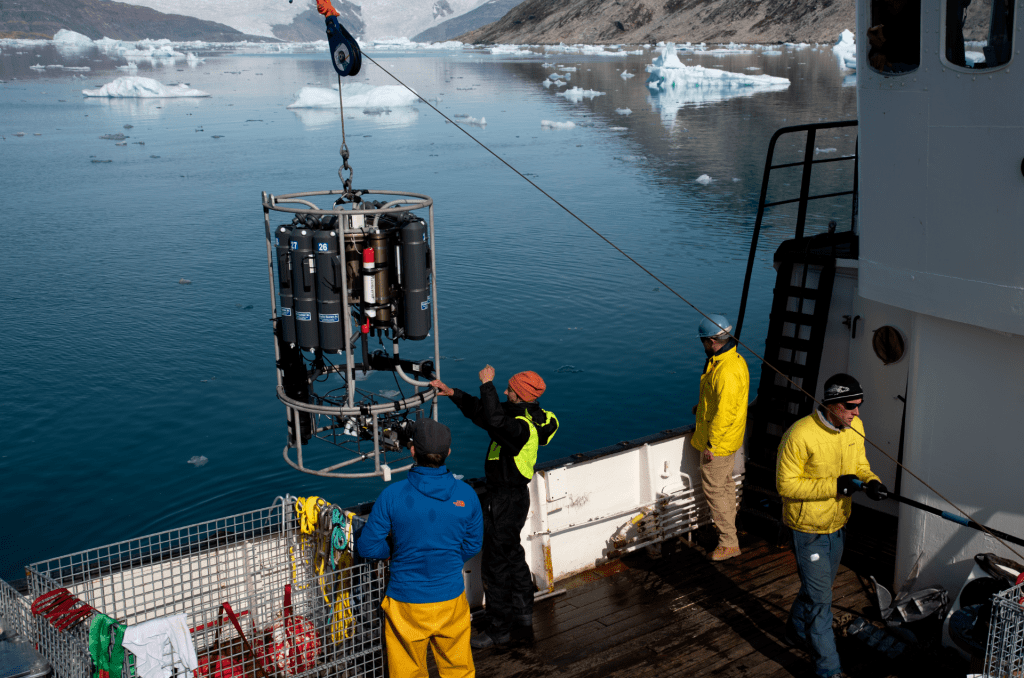Greenland Icebergs and Climate
Greenland has increasingly infiltrated the global imagination not only with climate change and the melting ice sheet, but also as a tourist destination for cruise ships, mountaineers, and others seeking remote, rugged landscapes. Places like Ilulissat, one of Greenland’s World Heritage site, boasts the massive Jakobshavn Glacier (Sermeq Kujalleq) that discharges skyscraper-sized icebergs into the ocean. Ilulissat has become a key site for iceberg tourism and glacier protection.
Of course Greenlanders and others in the Arctic have lived with ice—not just glaciers and icebergs but also sea ice—for centuries. They thus have multiple meanings for ice, which often have little to do with climate change even though a warming world melts the ice essential for their lives and cultures.
Icebergs can also play a key role in helping researchers understand how climate change is affecting the Greenland ice sheet. Researchers such as Dave Sutherland and his Oceans and Ice Lab recognize that the ocean—its temperature, salinity, currents—has an important influence on Greenland’s outlet glaciers. Studying icebergs in the Greenland fjords and off the coast can reveal how much ice is being discharged, how quickly it melts, where the freshwater gets distributed in the ocean, and how fjord dynamics influence the ice sheet.
Water currents and temperature as well as iceberg drift patterns in the fjords can affect the speed at which Greenland’s outlet glaciers flow into the fjords and discharge chunks of the ice sheet into the ocean.

